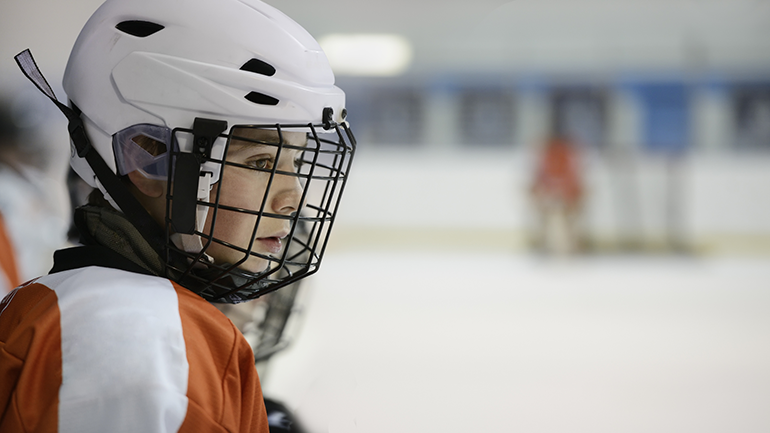
A properly fitted helmet helps to protect a child's brain from absorbing the force from a crash or a fall.
Everyone should wear a properly fitted helmet when:
- Cycling
- Skateboarding
- Inline skating
- Scooter riding
- Playing contact sports (such as hockey and football)
Different sports will require different types of helmets.
The helmet should cover the top of the forehead and should rest about two fingers' width above the eyebrows. The side straps should fit snugly around your child's ears in a 'V' shape. The buckles on the side strap should fit right under the ear. Buckle the chin strap. Tighten it until you can fit only one finger between the strap and your child's chin.
You should also ensure that your child has the full set of protective gear recommended for their sport to avoid sports injuries. The most commonly injured body parts are the hands and arms, although abrasions to other areas of the body are common. Wrist, elbow and knee pads should be worn when skateboarding and inline skating. Also, fitted mouth guards are a good idea in any sports activity that might involve falls or collisions.
Concussion
A concussion is an injury to the brain. Any blow to the face, head or neck, or a blow to the body that jars the head, could cause a concussion. It is important to know the signs and symptoms of a concussion so you can act appropriately. Anyone with a suspected concussion should be checked out by a medical doctor.
